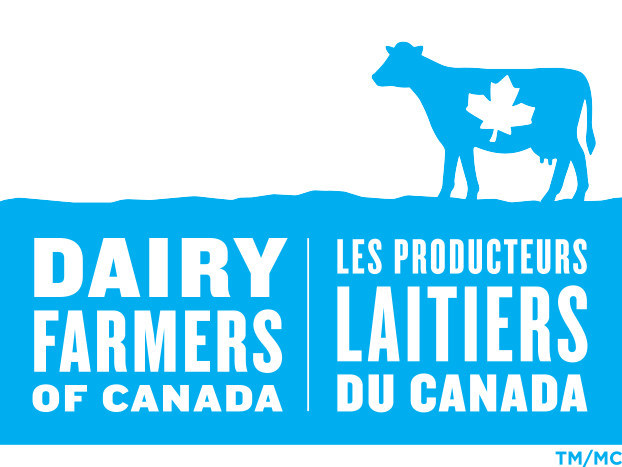Increasing the Production and Utilization of Alfalfa Forages in Canada
Complete

Project Overview
Forages are the major components in dairy ration and are therefore critical to the economic and environmental sustainability of dairy production in Canada.
Research conducted across Canada has been investigating methods to improve forage production by addressing its three pillars: nutritive value, yield, and persistence. The first objective was to improve the energy-to-protein balance of forage through genetic and management practices. The second objective was to increase alfalfa yield and persistence through breeding for reduced fall dormancy and increased winter survival, and through management practices that favor alfalfa establishment and longevity.
What Did the Research Team Do?
Developing alfalfa populations with higher energy. Four alfalfa populations were developed to target high energy and vigour, and were evaluated in both field and greenhouse trials.
Examining the impact of adding other forage species to alfalfa. Red clover, birdsfoot trefoil, and/or grass species, such as timothy or tall fescue, were added to alfalfa to determine the effect on the energy-to-protein balance.
Assessing the impact of forage with a better energy-to-protein balance on microbial protein synthesis. Alfalfa forages with contrasted energy-to-protein ratio were incubated using an in vitro gas production technique to simulate nutrient fermentation and degradation processes that prevail in the rumen.
Developing alfalfa populations with reduced fall dormancy, high freezing tolerance, and enhanced root disease resistance. Indoor selection methods developed at the Quebec RDC of AAFC was used to identify superior genotypes which were evaluated in field trial across Canada.
Evaluating the impact of the presence of grasses in mixture with alfalfa and companion crops at establishment of stands on forage yield and persistence of alfalfa. Alfalfa-based forage stands were established and studied during 5 years in several sites across Canada
What Did the Research Team Find?
- Genetic selection for high-energy in alfalfa allow us to develop one population showing an increased in energy concentration of about 5% of Dry Matter (DM) compared to the base population. This new population has commercial potential.
- New gene sequences associated with energy concentration were identified in alfalfa.
- The addition of about 25-30% of red clover or birdsfoot trefoil to alfalfa increased non-fibre carbohydrates by 1% DM. The addition of about 15% of grass species showed decreases in crude protein by 1% DM. Therefore, adding red clover, birdsfoot trefoil or grass are effective ways to improve energy-to-protein balance of alfalfa-based mixtures.
- Alfalfa forages with higher energy-to-protein ratio led to an increase in microbial protein synthesis and a lower rumen fluid ammonia (NH3) concentration.
- The use of barley as a companion crop at seeding of alfalfa-grass mixture improve the forage yield by more than 30% during the establishment year, without affecting the performance of forage mixtures the subsequent years. This led to a two-fold increase in the energy-to-protein ratio of the forage, due to the lower crude protein concentration of barley, which is the main species harvested, thus being an effective way to improve yield and the energy-to-protein balance of alfalfa-based mixtures in the establishment year.
- Including grasses in mixtures with alfalfa increase yield with time and cause a larger alfalfa stem density, thus this is a beneficial management practice to increase forage yield and alfalfa persistence.
**Scroll down for project communication outputs**
Principal Investigators
Annie Claessens
Agriculture and Agri-Food Canada (Quebec)
Bill Biligetu
University of Saskatchewan
Co-Investigators
Gaëtan Tremblay, Agriculture and Agri-Food Canada (Quebec)
Annick Bertrand, Agriculture and Agri-Food Canada (Quebec)
Solen Rocher, Agriculture and Agri-Food Canada (Quebec)
Marie‐Noëlle Thivierge, Agriculture and Agri-Food Canada (Quebec)
Fadi Hassanat, Agriculture and Agri-Food Canada (Quebec)
Philippe Seguin, McGill University
Édith Charbonneau, Université Laval
Julie Lajeunesse, Agriculture and Agri-Food Canada (Quebec)
Shabtai Bittman, Agriculture and Agri-Food Canada (Agassiz)
Derek Hunt, Agriculture and Agri-Food Canada (Agassiz)
Kathleen Glover, Agriculture and Agri-Food Canada (Kentville)
Kimberley Schneider, University of Guelph
Daniel Ouellet, Agriculture and Agri-Food Canada (Sherbrooke)
Caroline Halde, Université Laval
Patrice Audy, Agriculture and Agri-Food Canada (Quebec)
Surya Acharya, Agriculture and Agri-Food Canada (Lethbridge)
Key Words
- Forages, alfalfa, management practices, genetic selection, nutritive value, persistence, winter survival
Period: 2018-2023
Budget: $1,124,971
Last Updated: November 17, 2023
Note: As per the research agreement, aside from providing financial support, the funders have no decision-making role in the conduct of the studies, data collection, and analysis or interpretation of the data. Researchers are independent in conducting their studies, own their data, and report the outcomes regardless of the results. The decision to publish the results rests entirely with the researchers.
PROJECT COMMUNICATION OUTPUTS
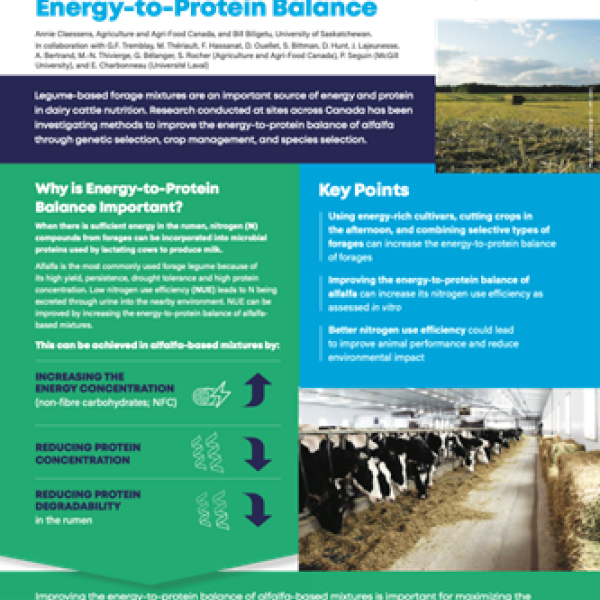
Infographic
DOWNLOAD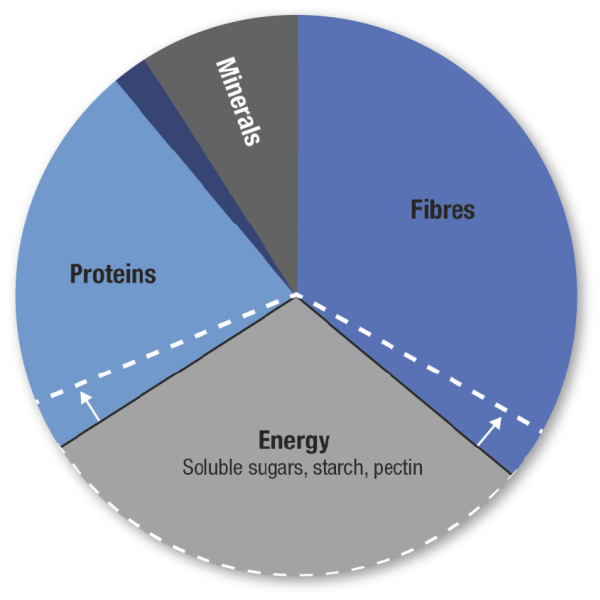
TRADE PUBLICATION
READ MORE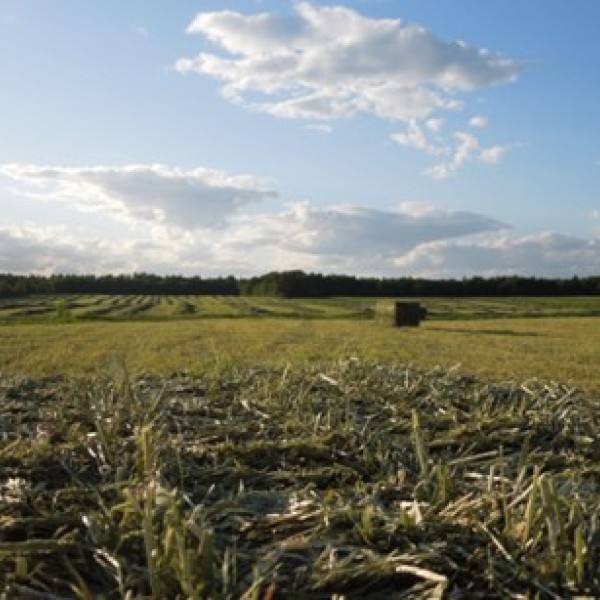
Podcast
LISTENWEBINARS
Améliorer la valeur nutritive des fourrages par l’amélioration génétique et la gestion des cultures (in French only)

Une luzerne plus riche en énergie : tranquillement mais sûrement
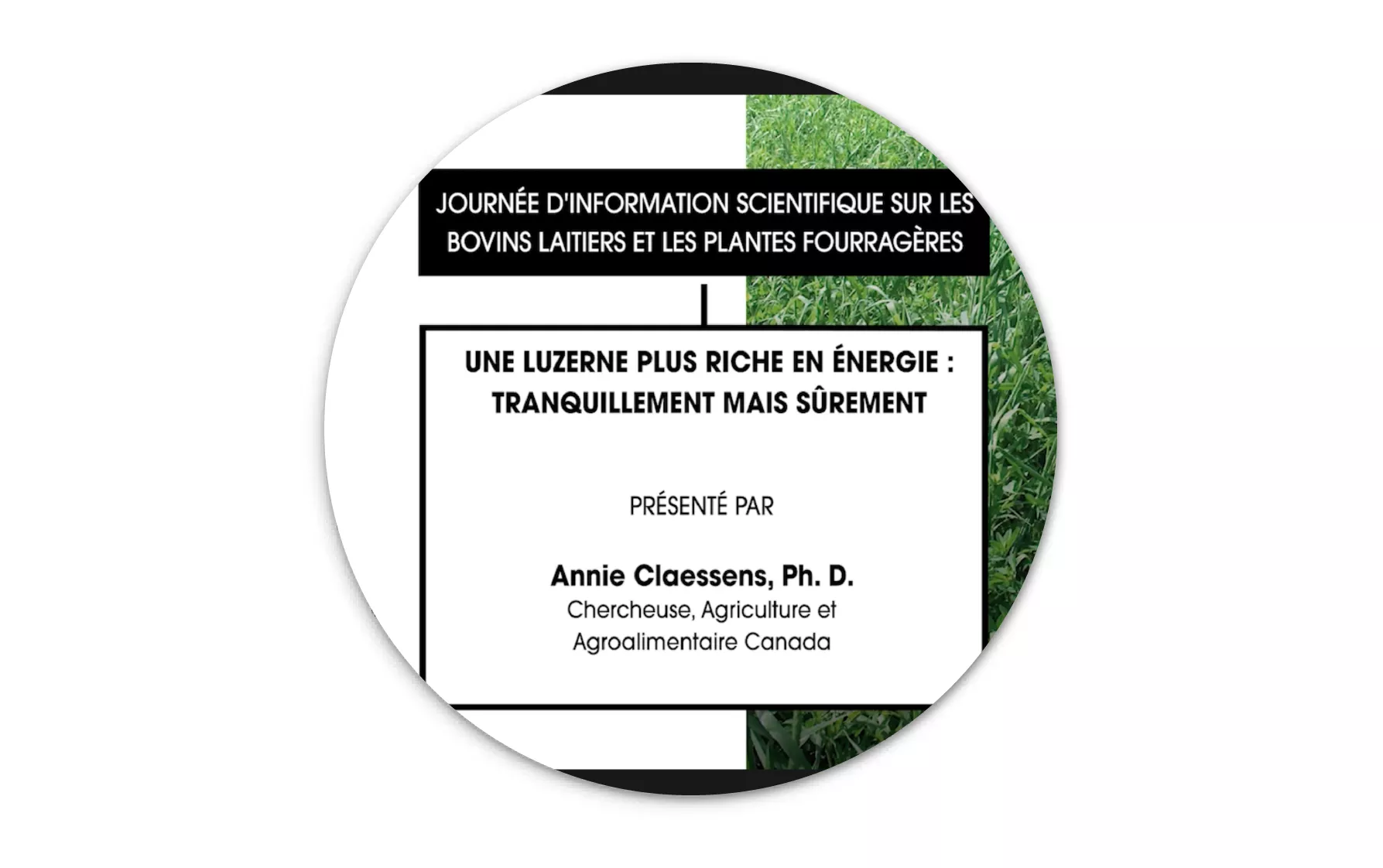
PROJECT PUBLICATIONS
-
Claessens, A., Bipfubusa, M., Chouinard-Michaud, C., Bertrand, A., Tremblay, G. F., Castonguay, Y., Bélanger, G., Berthiaume, R., & Allard, G. (2021). Genetic selection for nonstructural carbohydrates and its impact on other nutritive attributes of alfalfa (Medicago sativa) forage. Plant Breed. 140(5): 933-943. https://doi.org/10.1111/pbr.12950
-
Tremblay, G.F., Thériault, M., Seguin, P., Godin, X., Claessens, A., Bittman, S., Hunt, D., Bélanger, G., Hakl, J., Bertrand, A., Thivierge, M.N. 2023. Legume addition to alfalfa-based mixtures improves the forage energy to protein ratio. J. Agron. 115(4) : 1842-1855. http://dx.doi.org/10.1002/agj2.21386
-
Bélanger, G., Tremblay, G.F., Thivierge, M.-N., Thériault, M., Seguin, P., Lajeunesse, J. Claessens, A. 2023. Cutting schedule and species composition to improve energy-to-protein ratios in alfalfa-based mixtures. J. Agron. https://doi.org/10.1002/agj2.21496

